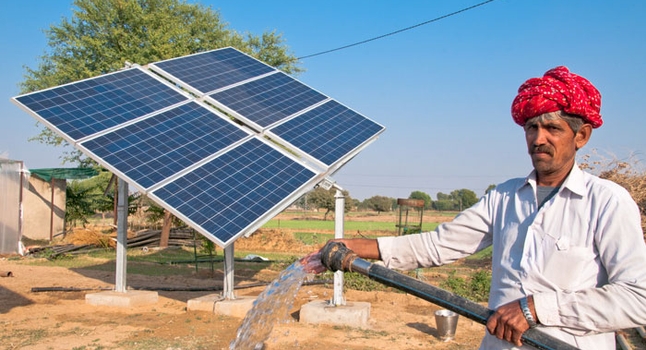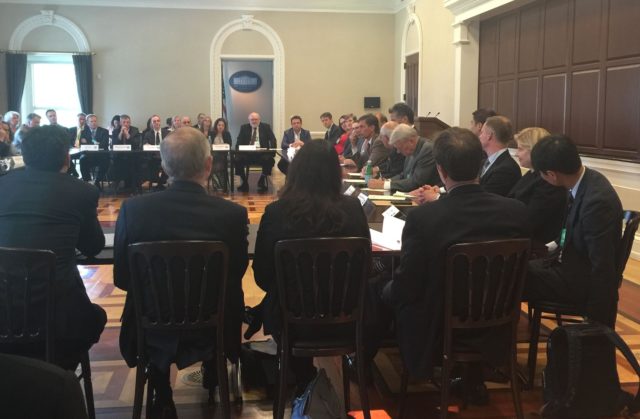
*Tata Power
>> Microgrids
– ComEd Developing Super-Microgrid Controller
Utilities are increasingly turning to local community, or public purpose, microgrids as a means of building more efficient, reliable, and resilient transmission and distribution (T&D) grids. Real-time communication is a key element of any microgrid project, as well as utility efforts to connect microgrids to form, or connect, to larger scale power grids.
In Illinois, for example, Exelon subsidiary Commonwealth Edison (ComEd) is in the midst of one of the nation’s largest smart meter and automated metering infrastructure (AMI) deployments. To create a network of microgrids, ComEd is developing ¨a kind of super microgrid controller,¨ according to a news report.
Industry-wide digital communications technology standards for microgrids have yet to be developed. ComEd is developing its own, teaming up with S&C Electric, the Illinois Institute of Technology (IIT) and others to build one.
ComEd expects to begin testing the super-microgrid controller in Q3 to establish communications links between its planned 10 MW Bronzeville microgrid and IIT’s 12 MW microgrid.
> International
– National Renewable Energy Micro/Mini Grid Policy in the Works in India
At the UN climate treaty talks in Paris last December, India presented its plan for renewable energy resources to meet 40% of national electricity generation by 2030. In addition to reducing greenhouse gas emissions, the key goal is broadening access to electricity service to the estimated 237 million Indians who lack it.
Renewable energy microgrids are slated to play a big part. The strategic plan India presented at the Paris climate talks called for installation of at least 10,000 renewable energy micro- and mini-grids with a capacity of 500MW or more, according to a news report.
Following through on implementation, India’s Ministry of New and Renewable Energy (MNRE) issued a draft ¨National Policy for Renewable Energy based Micro and Mini Grids¨ for stakeholders to review and comment on by June 20. Incentives to deploy them in under-served and areas lacking access to grid power are a key focal point.
The proposed national policy gives state and local public and private sector organizations the leeway to develop their own detailed policies and plans using the national policy as a guide.
In addition, MNRE proposes to classify India’s young electricity services companies (ESCOs). The companies that want to build renewable mini- (less than 10kW) and microgrids (more than 10kW) in under-served rural areas as Rural Energy Services Providers, would then gain government support and certain privileges.
>> Energy Storage

– Private, Public Sector Organizations Join President’s Renewable Energy-Storage Initiative
President Barack Obama has signed new executive actions and commitments for 33 state governments and private-sector companies, accelerating the integration of renewable power generation and advanced energy storage systems. At least 1.3 gigawatts (GW) of new energy storage procurement or deployment is expected over the next five years as a result, the White House announced June 16.
The new clean energy initiative was announced as the President hosted a Summit on Scaling Renewable Energy and Storage with Smart Markets at the White House. Representatives from regulatory bodies, power companies, municipalities, and project developers attended.
The announcement marks the latest in the President’s ongoing efforts to marshal the resources and coordinate the activities of key public and private-sector stakeholders in order to accelerate the transition to a low-carbon economy and society. Numerous and varied in scope and scale, the commitments announced during the White House summit should offer an added boost to a U.S. energy storage market that’s been growing at a torrid pace, albeit from an initially small base.
– Cal State University System Launches Energy Storage Projects
Cal State executives expect rolling out intelligent battery-based energy storage systems across 23 state university campuses will save millions of dollars a year in energy costs, as well as contribute to the state-wide goal of reducing greenhouse gas emissions and enhancing grid services, according to a news report.
Electricity bill savings of $3.3 million are anticipated for the first phase of the project, which includes deploying an initial advanced battery storage system at Cal State, Long Beach, this summer.
Designed and installed by San Francisco-based Advanced Microgrid Solutions (AMS), the advanced battery storage system to be installed on the Long Beach campus will be able to store enough electrical energy to power some 2,000 homes.
“By helping integrate more renewable energy onto the grid, this transformational system will support California’s environment and direct resources to support the academic mission of the CSU,” says CSU executive vice-chancellor and CEO Steve Relyea in a statement.
>> Policy & Markets
– FERC Ruling Opens Door to Possible 400GW of Renewables
On June 16, The Federal Energy Regulatory Commission (FERC) announced that member-owned rural electric cooperative Delta Montrose Electric Authority’s (DMEA) right to tap cost-competitive local renewable energy resources supersedes its long-term contractual obligations to take power from regional generation and distribution services provider Tri-State.
DMEA’s contract with Tri-State stipulates that the electric coop’s self-generation cannot exceed 5% of its annual electricity use. DMEA would exceed that cap were it to go ahead with its plan. The plan’s goal is to make up for local jobs lost from a coal mine closure and to source electricity from local small-scale hydroelectric and solar power generation, according to a news report.
Unable to come to an agreement with Tri-State, DMEA brought its case to FERC. FERC first ruled unanimously in DMEA’s favor last July, clarifying what had beenw considered unclear wording in PURPA (Public Utilities Regulatory Policies Act) as well as Tri-State’s regulatory status.
FERC ruled that as per PURPA, DMEA not only had the right but the obligation to purchase electricity directly from “Qualifying Facilities” (QFs) over and above the 5% cap it is limited to in its contract with Tri-State.
With the ruling, FERC opened the door for DMEA and other Tri-State electric co-op members to tap into cost-competitive renewable energy resources right in their backyards. DMEA intends to move forward and contract for electricity from a small-scale hydropower facility to be built on a local irrigation canal proposed by Percheron, says DMEA’s Manager of Member Relations and Human Resources Virginia Harman.
In response, Tri-State petitioned to enact a new tariff that would have penalized DMEA and any other of its 44 distribution coop members for purchasing power from local QFs, saying DMEA should be able to recover any lost revenue that results from such actions.
FERC disagreed and rejected Tri-State’s petition, opening the door for electric co-ops, municipal utilities, and the generation and distribution contractors to make greater use of local renewable energy resources.
¨Rural electric cooperatives and municipal utilities sell 987 TWh (million MWh) per year,¨ says Rocky Mountain Institute. ¨Twenty gigawatts of solar would serve 5 percent of that consumption. Now that self-generation caps have effectively been lifted, the continuing decline of renewable power prices could open up a 400 GW potential market.¨
